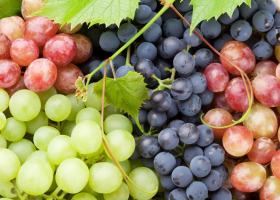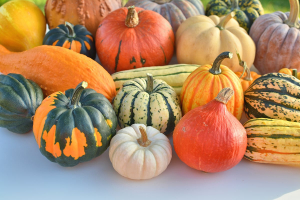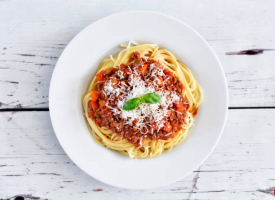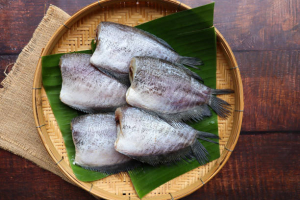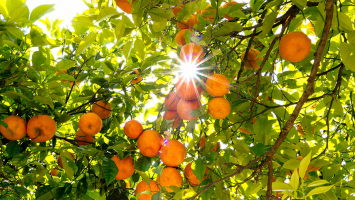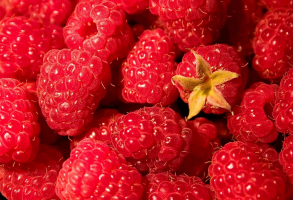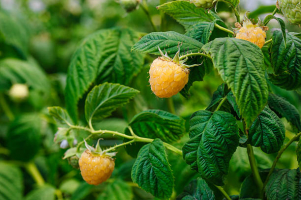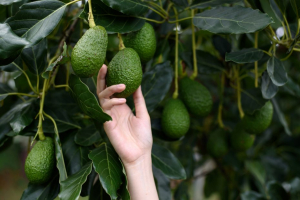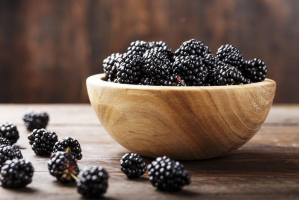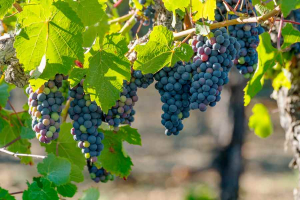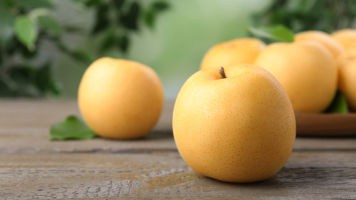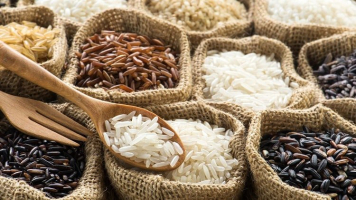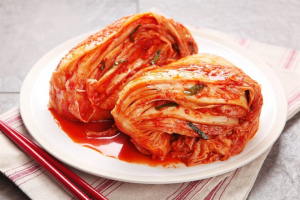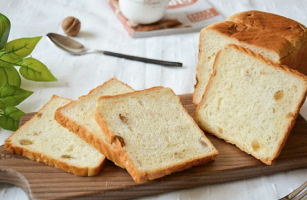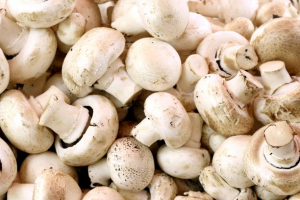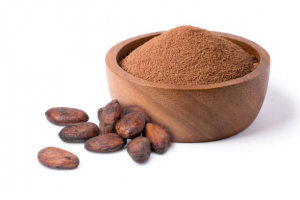Top 10 Most Delicious Types Of Brown Fruits
Many people think of green, red, and yellow when it comes to fruit, but brown is actually the most common color for these sweet treats. Longan, dates, and kiwi ... read more...are all wonderful examples of brown-colored fruits, but they are not the only ones. Below are the most delicious types of brown fruits, let's find out!
-
Kiwi (Actinidia deliciosa), also called kiwifruit or Chinese gooseberry, woody vine, and edible fruit of the family Actinidiaceae. The plant is native to mainland China and Taiwan and is also grown commercially in New Zealand and California. The fruit can be either raw or cooked and has a little acidic flavor. The juice can occasionally be used to tenderize meat. Vitamin C and K levels in raw kiwis are high.
The male and female blooms on kiwi vines are produced on different individuals because they are dioecious. Typically, one male plant can help three to eight female plants pollinate. The ellipsoidal kiwi fruit has brownish-green skin that is hairy and is a real berry. Numerous tasty purple-black seeds embedded around a white center can be seen throughout the hard translucent green flesh. The deciduous leaves are alternately borne on tall petioles, and the immature leaves have reddish hairs on them.
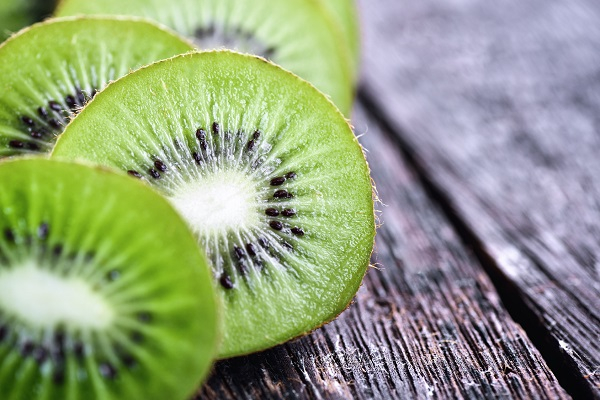
ADIVA 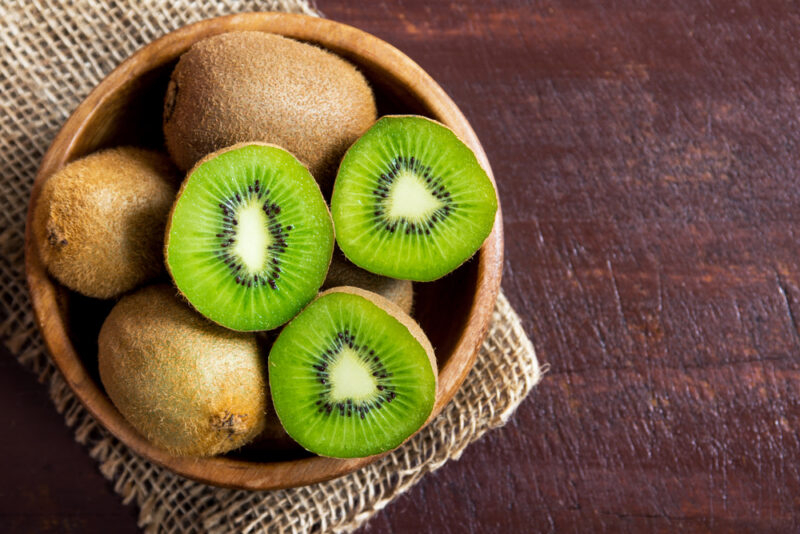
iStock -
Dimocarpus longan, commonly known as the longan, is a tropical tree species that produces edible fruit. It is one of the better-known tropical members of the soapberry family Sapindaceae, to which the lychee and rambutan also belong. The fruit of the longan is similar to that of the lychee but less aromatic in taste. It is native to tropical Asia and China. Currently, longan crops are grown in southern China, Taiwan, northern Thailand, Malaysia, Indonesia, Cambodia, Laos, Vietnam, India, Sri Lanka, Philippines, Australia, the United States, and Mauritius. It is also grown in Bangladesh.
The longan's fruit, when shelled, looks like an eyeball because the black seed peeks through the flesh like an iris or pupil. The seed is small, rounded, firm, and black with an enamel-like lacquer. The thin, tough shell of the fully ripened, recently harvested fruit has a bark-like texture, making it simple to peel by "cracking" the pulp out like a sunflower seed. The fruit becomes less convenient to the shell when the shell has higher moisture content and is more delicate. Premature harvest, variety, weather, or conditions during shipping or storage all affect how fragile the shell is.
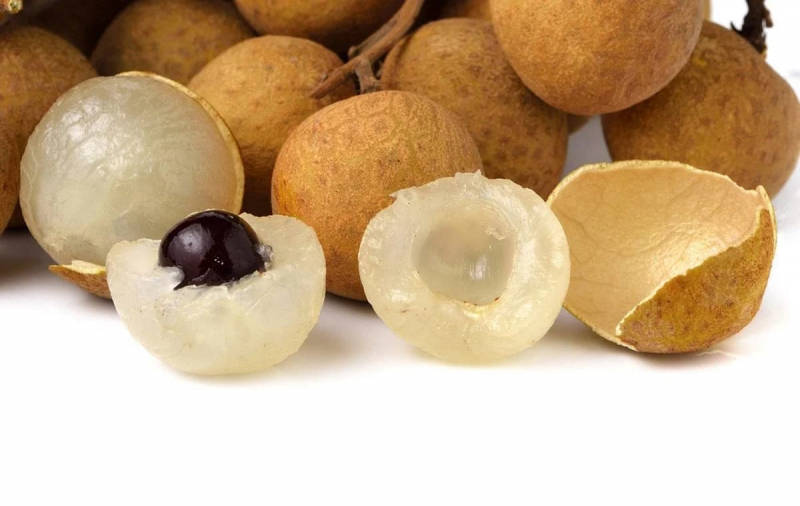
Savory Experiments 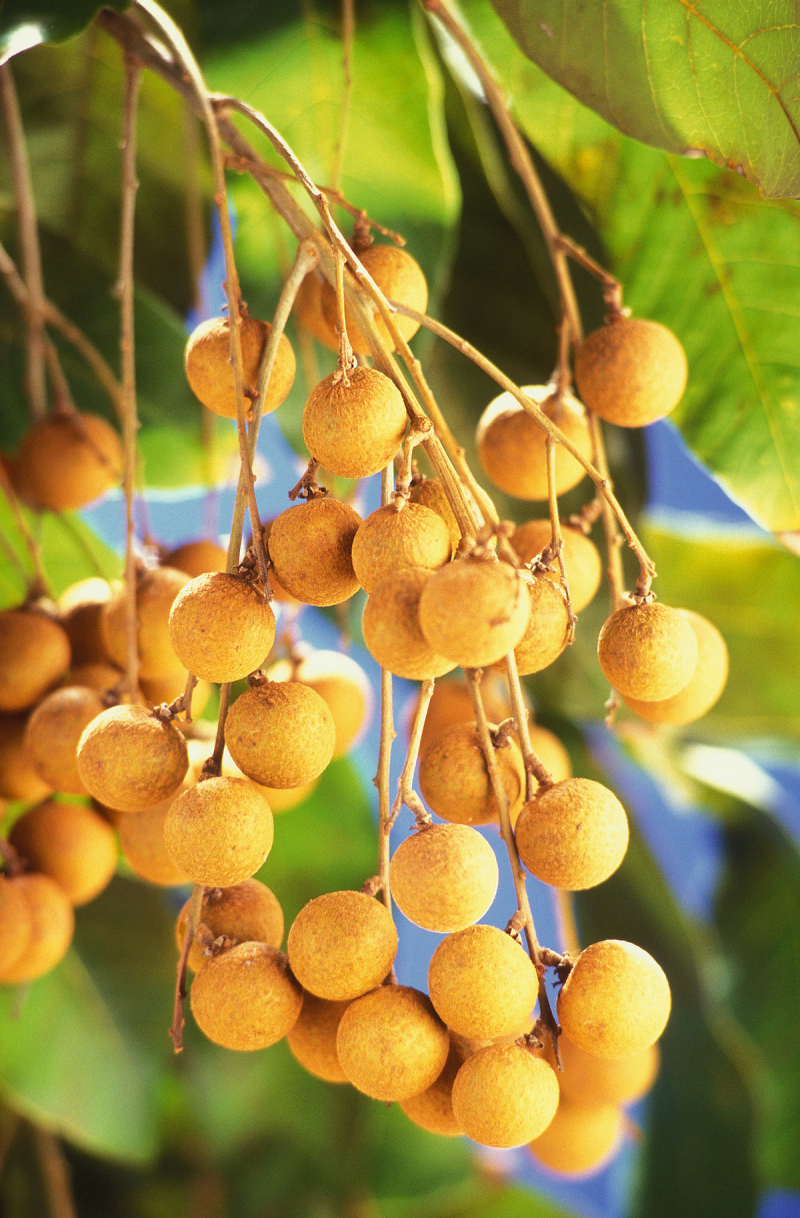
Wikipedia -
Lansium parasiticum, commonly known as langsat or Longkong in English; duku in Indonesian or dokong in Terengganu Malay, is a species of tree in the Mahogany family with commercially cultivated edible fruits. The species is native to Southeast Asia. Langsat is a nutritionally rich fruit containing many vital elements like proteins, carbohydrates, minerals, vitamins, and dietary fiber in abundance. It is rich in vitamin A, thiamine, and riboflavin, which are necessary for many body functions.
A shrub called langsat produces tiny delicious fruits. These fruits resemble potatoes from the outside, yet they have white flesh inside that contains bitter, inedible seeds. Duku is the name for the langsat kind that is greater in size. In Malaysia, Indonesia, Thailand, and Sumatra, langsat is commonly farmed and grows in clusters. It grows in India's southern Nilgiri highlands from April to September. These fruits taste a lot like grapes and have an acidic, sour, and sweet flavor combination. Some people compare its flavor to that of a pomelo. When ripe, its aril is juicy and transparent. The flavor of langsat is incredibly unusual and refreshing when fully mature.
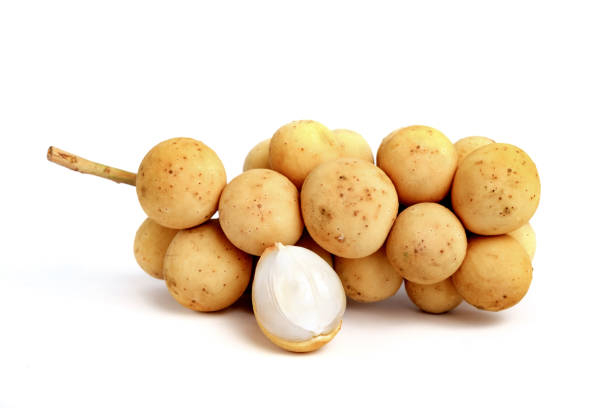
iStock 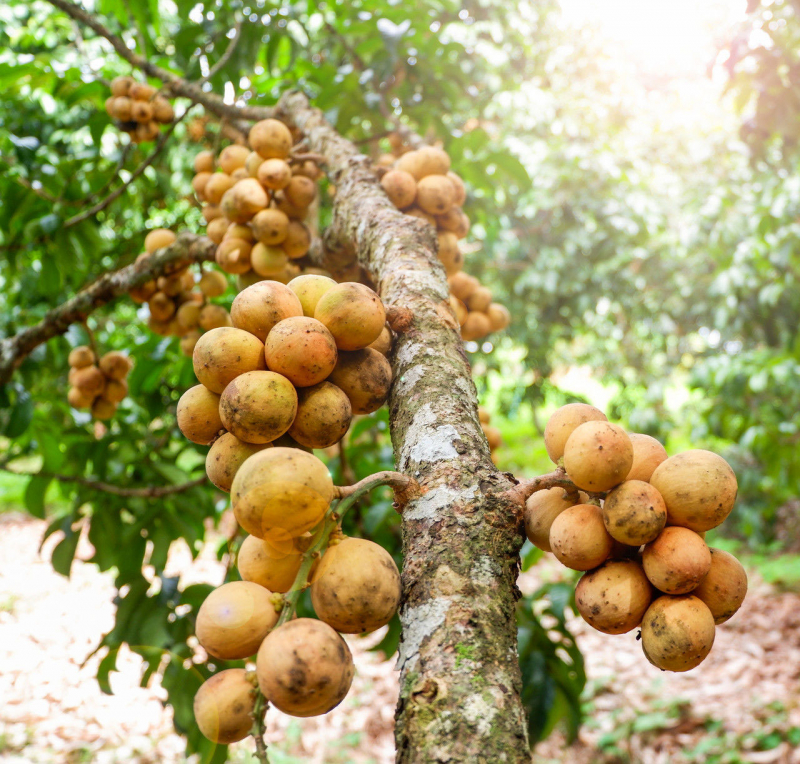
M-Tech Gardens -
Tamarind (Tamarindus indica) is a leguminous tree bearing edible fruit that is probably indigenous to tropical Africa. The genus Tamarindus is monotypic, meaning that it contains only this species. It belongs to the family Fabaceae. Throughout South Asia and the tropical world, tamarind trees are used as an ornamental, garden, and cash crop plantings. Commonly used as a bonsai species in many Asian countries, it is also grown as an indoor bonsai in temperate parts of the world.
The brown, pod-like fruits that the tamarind tree produces are utilized in foods all around the world because of their sweet, acidic pulp. Additionally, the pulp is utilized as metal polish and in conventional medicine. Tamarind seed oil can be extracted from the seeds of the tree and used in woodworking. In Indian and Filipino cuisine, the young, tender leaves of tamarind are used. The fruit is best described as sweet and sour in taste and is high in tartaric acid, sugar, B vitamins, and, unusually for a fruit, calcium.
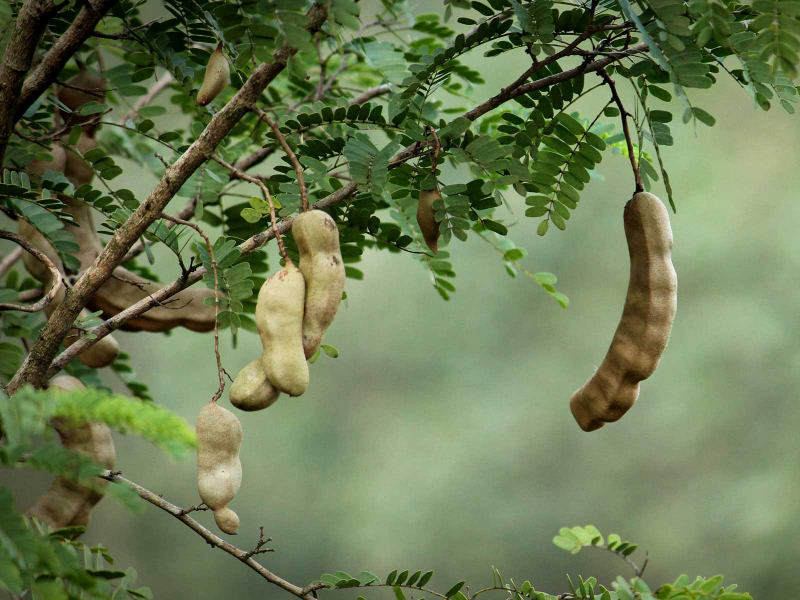
Umami Days 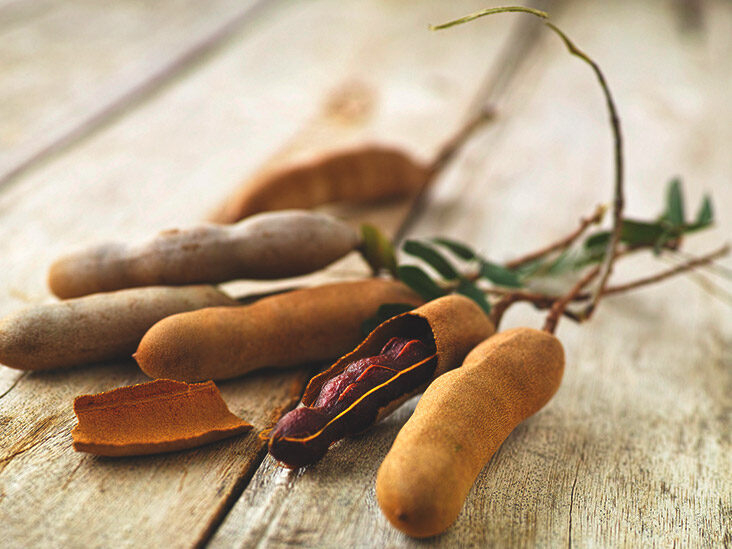
Healthline -
Manilkara zapota, commonly known as sapodilla, sapote, naseberry, nispero, or chicle, is a long-lived, evergreen tree native to southern Mexico, Central America, and the Caribbean. A natural instance of this can be found in the ecoregion of Petenes mangroves on the coast of Yucatán, where it is a subdominant plant species. During Spanish colonization, it was brought to the Philippines. It is grown in large quantities in Mexico and in tropical Asia including India, Pakistan, Thailand, Malaysia, Cambodia, Indonesia, Vietnam, and Bangladesh.
The fruit is a huge berry with a diameter of 4–8 cm. Its inside flesh has a feel similar to that of a well-ripened pear and can range in hue from pale yellow to earthy brown. There are one to six seeds in each fruit. The seeds are firm, glossy, and black, like beans, and they have a hook at one end that, if ingested, can get stuck in the throat. The fruit has a flavor that is particularly sweet and malty. The unripe fruit is firm to the touch and rich in saponin, which produces drying effects on the mouth due to its similar astringent characteristics to tannin. Only warm, mainly tropical settings are suitable for the trees to thrive; dying easily if the temperature drops below freezing.
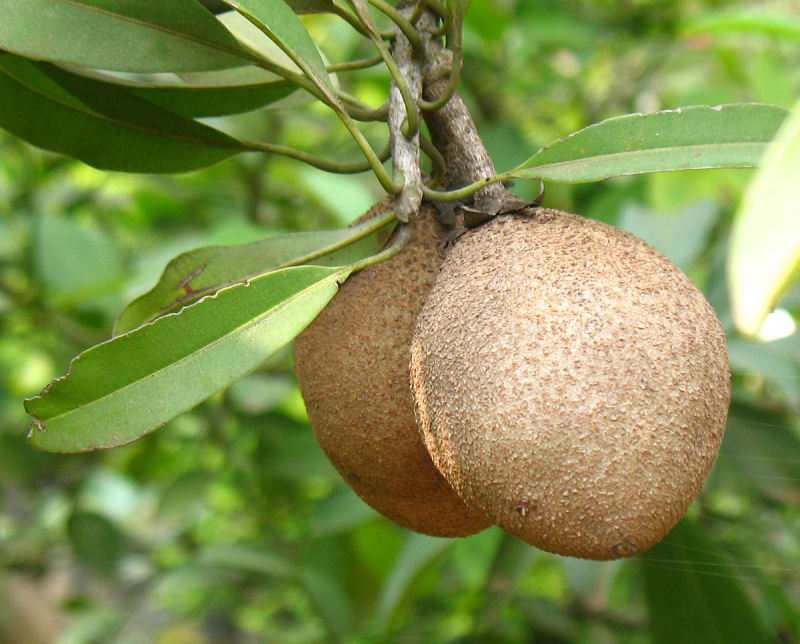
Wikipedia 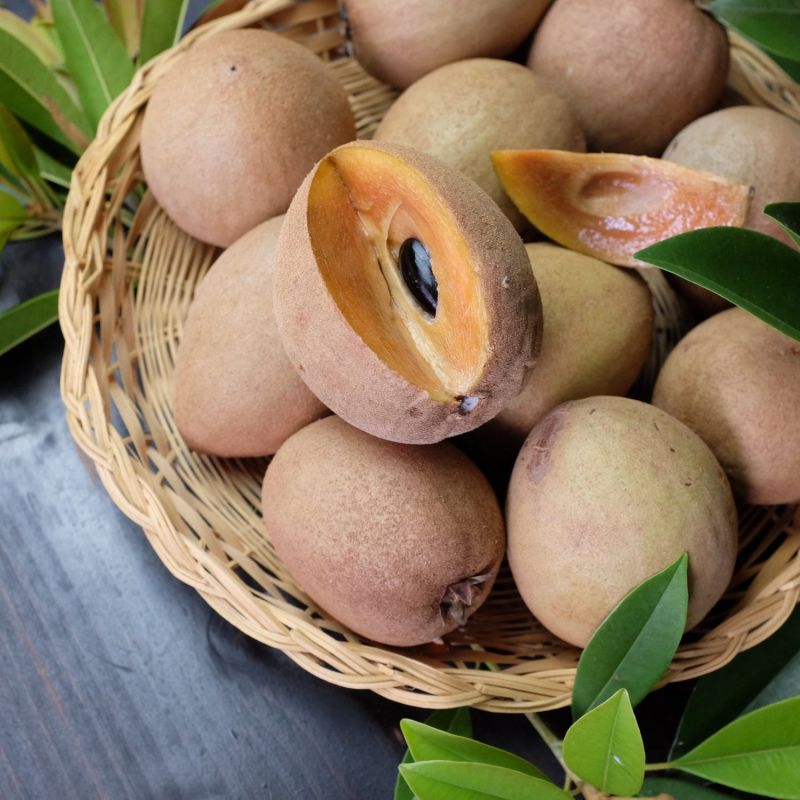
Dream Encyclopedia -
Phoenix dactylifera, commonly known as date or date palm, is a flowering plant species in the palm family, Arecaceae, cultivated for its edible sweet fruit called dates. The species is widely grown in South Asia, the Middle East, and northern Africa. It has also become naturalized in many tropical and subtropical areas around the world. The type species of the genus Phoenix, which includes 12–19 species of wild date palms, is P. dactylifera.
Date trees can grow alone or in clumps with multiple stems from a single root system, reaching heights of up to 30 meters (100 feet). They grow slowly and, with proper care, can live for more than a century. Date fruits (dates) are oval-cylindrical, 3 to 7 centimeters long, and about 2.5 centimeters in diameter. Depending on the cultivar, their color can range from dark brown to bright red or yellow. Dates are exceedingly sweet and are eaten as desserts on their own or in confections. When dried, dates contain 61–68 percent sugar by mass.
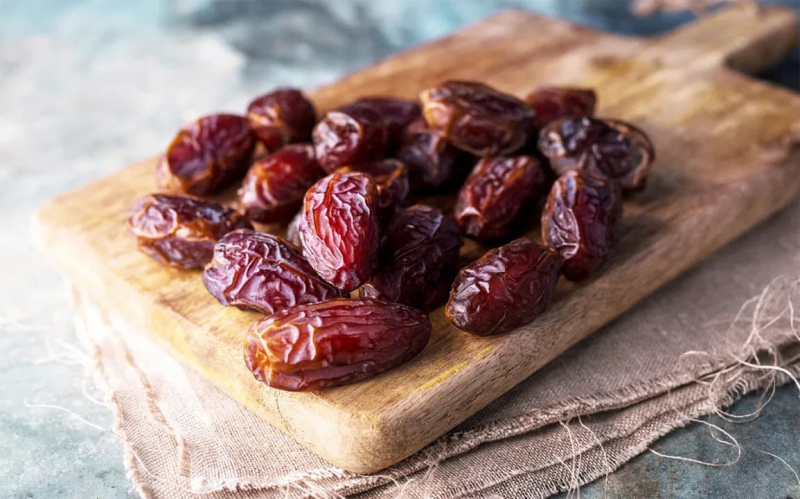
Healthline 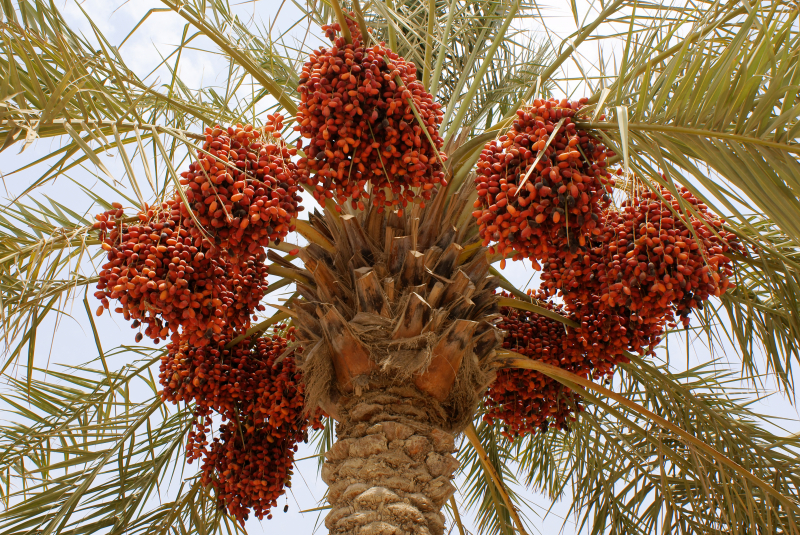
Wikipedia -
Salak (Salacca zalacca) is a species of the palm tree (family Arecaceae) native to Java and Sumatra in Indonesia. It is cultivated in other regions of Indonesia as a food crop and is reportedly naturalized in Bali, Lombok, Timor, Maluku, and Sulawesi. The salak tree has been cultivated throughout Indonesia, and there are at least 30 cultivars, most of which have an astringent taste and are sweet. Two popular cultivars are salak pondoh from Yogyakarta province (found in 1980s) and salak Bali from Bali.
It has very short stems with leaves that can reach 6 meters (20 feet) in length. Each leaf also has several leaflets and a 2-meter-long petiole with spines that can reach 15 centimeters in length. Due to their reddish-brown scaly coating and clustered growth near the base of the palm, the fruits are also known as snake fruit. They have a distinct tip and are roughly the size and shape of a ripe fig. The pulp can be eaten. Pinching the fruit's tip should cause the skin to slough off so that it may be removed away from the fruit. The fruit inside consists of three lobes with the two larger ones, or even all three, containing a large inedible seed. The taste is usually sweet and acidic, with a strong astringent edge, but its apple-like texture can vary from very dry and crumbly (salak pondoh from Yogyakarta) to moist and crunchy (salak Bali).
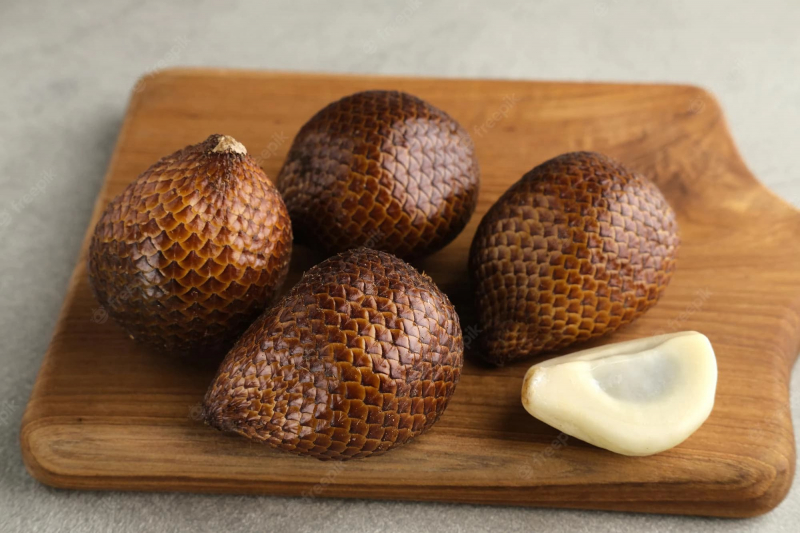
Freepik 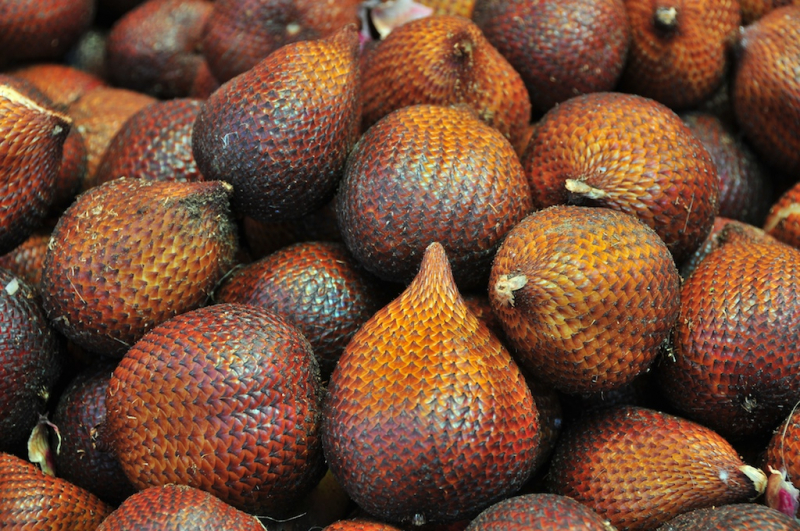
Wikimedia Commons -
Many locals and visitors to Japan adore Nashi, a cooling sweet delight. Nashi is also referred to as a sand pear, Asian pear, and Japanese pear. In addition to Nepal, India, Australia, and New Zealand, this fruit is widely grown across East Asia. In Japan and other East Asian nations, the Nashi blossom is regarded as a symbol of spring. It has a green body with an endless number of tiny spots on it. It has a familiar Western pear appearance. They differ from one another, nonetheless, in certain ways.
The flavor and size of a Japanese pear will be gentler. If you enjoy crisp pears, you should prefer Nashi because it has a crunchier texture than Western pears. The spherical shape of this fruit makes it easy to recognize this cultivar. Since it has been grown in Japan since prehistoric times, it is a fruit with a lengthy history. Pies and jams rarely contain them because of the high water content. Typically, Japanese people enjoy eating pear raw or adding it to sauces and savory foods.
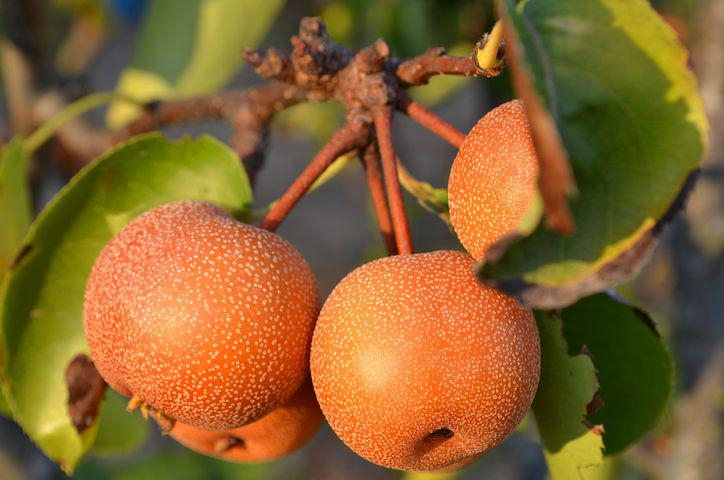
Pixabay 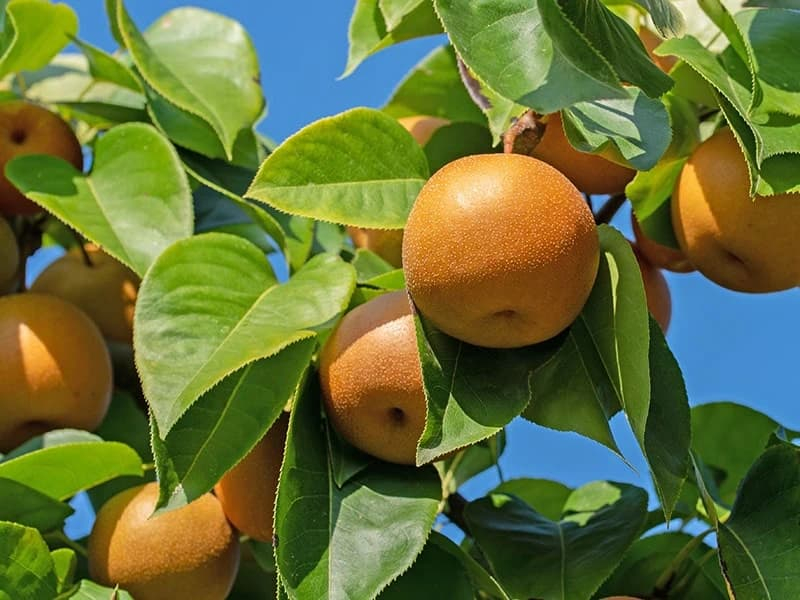
iStock -
Mespilus germanica, known as the medlar or common medlar, is a large shrub or small tree in the rose family Rosaceae. The tree is native to the area surrounding modern-day Iran and was introduced to Western Europe by the Romans. It used to be widely eaten in Britain through the 19th century but fell out of favor when more appealing fruit and sugary sweets came into popularity. Under ideal circumstances, the deciduous plant grows up to 8 meters (26 feet) tall. Generally, it is shorter and more shrub-like than tree-like. With a lifespan of 30–60 years, the tree is rather short-lived. Its bark is grayish brown with deep vertical cracks forming rectangular plates that tend to lift off.
Medlars are picked in November, ideally after a period of frost that helps the fruit mature more fully. In order to keep them cold and dark during the subsequent bletting process, they should be placed in vented wooden boxes lined with straw or paper. The bottom end can simply be placed face down on a plate and covered. It takes some time to blet, but as the fruits begin to turn a wrinkled brown and get fermented, you know you're on the right track. When removing the pulp from a very ripe medlar, proceed with caution because it will rupture at the slightest touch. Gently remove the stalk by grasping the crown and pulling the flesh out.
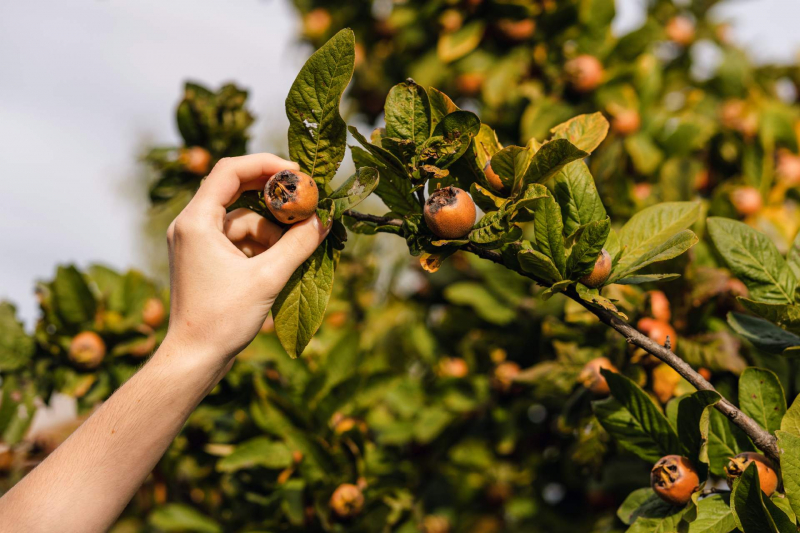
Fine Dining Lovers 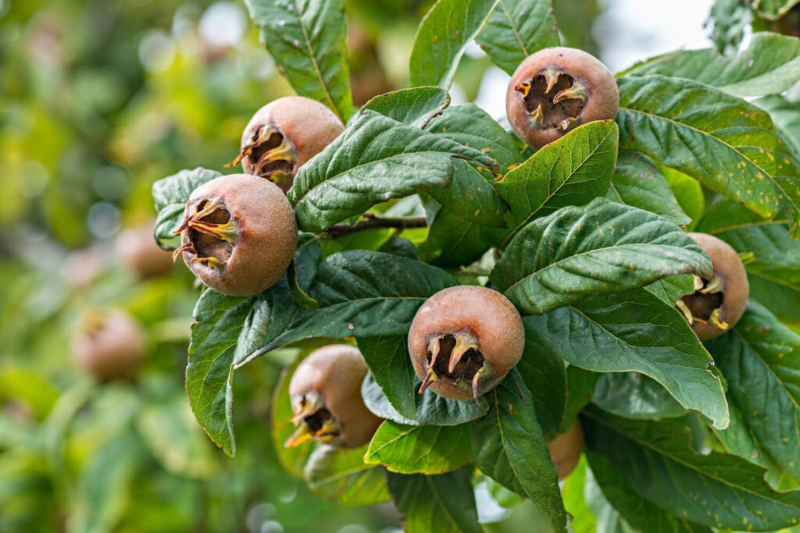
Plantura Garden -
'Kumato' is a trading name given to a patented cultivar of tomato developed in Spain called 'Olmeca', which went by experimental number SX 387. A typical tomato cultivar called "Kumato" weighs between 80 and 120 grams (2.8 and 4.2 ounces). It is hard, varies in color from green to reddish brown or purple, and has a flavor that can be either practically flavorless or sweeter than that of a conventional tomato because of a greater fructose concentration. Given that the "Kumato" is a hybrid, plants borne from seeds may not always resemble their parents.
'Kumato' is grown by specially selected growers in Australia, Belgium, Canada, France, Greece, the Netherlands, Spain, Switzerland, Turkey, Mexico, Southern Lebanon, and on the Isle of Wight in the United Kingdom. They can range in flavor from mild to quite sweet and fragrant. Due to the high fructose level, it has a strong sweetness. Additionally, the juicy texture works well for making drinks or salads. You can keep it in the fridge to preserve it, but doing so may lessen its sweetness and flavor.
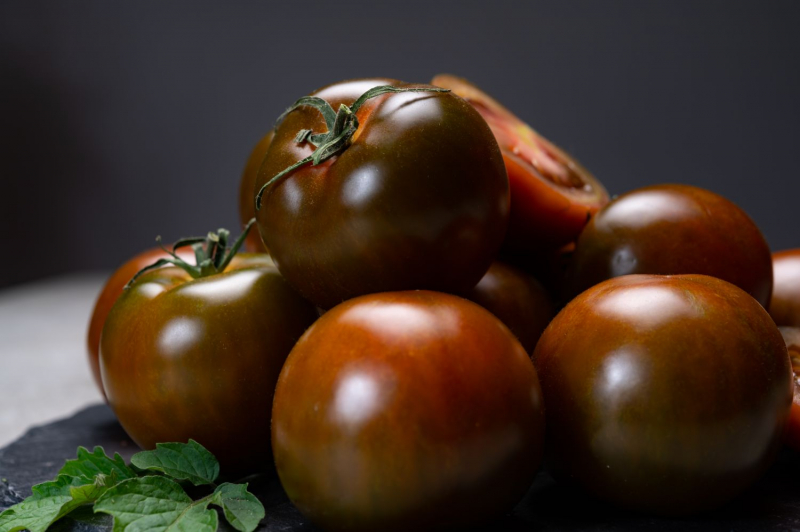
Plantura Garden 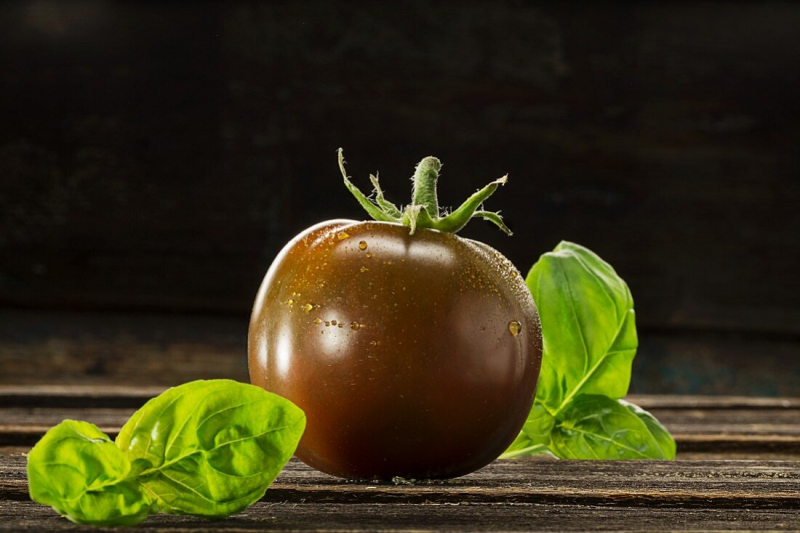
StockFood












